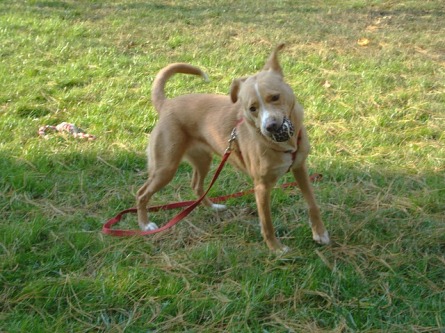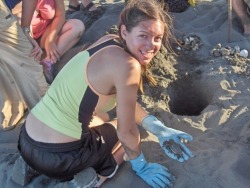For the average citizen to get more in-depth information on environmental issues, reading books and watching documentaries is a great starting point. Below you will find a list of some great examples of both. I have read and watched much of what's on this list, and highly recommend them. If I had to pick a favorite of each, Go Further is my top documentary and In Defense of Food is my number one reading choice. If you have read any of these novels, watched any of these documentaries or have further recommendations, please leave a comment to share your thoughts with others! Movies/TV Series - No Impact Man: The Documentary (2009)
- Go Further (2004)
- Food, Inc. (2008)
- King Corn (2007)
- The Beautiful Truth (2008)
- Eco Trip Series – Sundance Channel (2009)
- The Garden (2008)
- The Lazy Environmentalist Series – Sundance Channel (2009)
- The Future of Food (2004)
- Fast Food Nation (2006)
- Super Size Me (2004)
- An Inconvenient Truth (2006)
- When the Levees Broke: A Requiem in Four Acts (2006)
Non-Fiction Books - Cradle to Cradle – William McDonough and Michael Braungart
- Earth Odyssey: Around the World in Search of our Environmental Future – Mark Hertsgaard
- Guns, Germs, and Steel: The Fates of Human Societies – Jared Diamond
- Collapse: How Societies Choose to Fail or Succeed – Jared Diamond
- Red Sky at Morning: America and the Crisis of the Global Environment – James Gustav Speth
- The Omnivore’s Dilemma: A Natural History of Four Meals – Michael Pollan
- In Defense of Food: An Eater’s Manifesto – Michael Pollan
- Fast Food Nation - Eric Schlosser
- Food Politics – Marion Nestle
- Poisons on our Plates: The Real Food Safety Problem in the United States – Michele Morrone
- Troubled Waters: Religion, Ethics and the Global Water Crisis – Dr. Gary L. Chamberlain
- Boiling Point: How How Politicians, Big Oil and Coal, Journalists, and Activists Have Fueled a Climate Crisis--And What We Can Do to Avert Disaster – Ross Gelbspan
- Diet for a New America – John Robbins
- Harvest for Hope: A Guide to Mindful Eating – Jane Goodall
- The Ten Trusts: What we must do to Care for the Animals we Love – Jane Goodall and Marc Bekoff
- The Environmental Predicament: Four Issues for Critical Analysis – Carol F. Verburg
- Animal, Vegetable, Miracle - Barbara Kingsolver
Classic Non-Fiction Books - Sand County Almanac – Aldo Leopold
- Silent Spring – Rachel Carson
This is Wheeler, my nearly four-year-old American Staffordshire mix. Going to work at a City of Raleigh lake on a summer day in 2006, I heard a jingling behind me while I walked across the parking lot. Turning around, I saw a cute little dog running around my feet. She had a shoelace tied around her neck, and clipped to it was a short metal leash, dragging on the ground. After an unsuccessful search for an owner or information, Wheeler came home with me and she's been by my side ever since. This past Friday evening, I experienced perhaps the biggest pet-related scare of my life when Wheeler began having a seizure. I heard her walk through the living room with a strange rhythm, and as I turned to look, she came walking around the corner glassy-eyed and with her front right leg stiffened up. She began collapsing on herself. Thinking she may have been choking, I took off her collar and began rubbing her neck. It wasn't helping, and she was getting worse. More of her body began seizing and I was terrified. I picked her up and ran downstairs to a friend's apartment for help. She was unable to hold herself up due to the spasms in her legs, so I sat on the ground holding and rubbing her while phone calls were made to get some information. Since her body was so tense from the seizure, there were not any visible signs that she was breathing, as it was probably nearly impossible for her to take deep breaths. After a couple of minutes, she came out of the seizure. Muscles in her hind legs continued to twitch a little longer, but she was standing up, drinking water and saying thank-you to friends by licking their faces. I was so glad she was okay. The experience left me with a lot of questions - mainly, what would cause such a thing to happen to my young, healthy dog? After talking with a friend who had two similar experiences with her dog, I learned about the severity of canine epileptic seizures. I've never experienced such a thing with any other dog I've had as a pet. In addition to ways to help the dog through the seizure, what to do afterward, what sort of information to take to and get from the vet, we discussed diet. Little did I know, there are so many potential seizure triggers in your standard dry dog food. After searching several websites (links provided below), I found out that many of those potentially hazardous ingredients were in Wheeler's food - a dry dog food I'd expected to be a medium-grade choice. After carefully reading the label, I found that it contains the preservatives BHT and BHA, both of which can cause seizures, among other severe health issues. Food dyes, particularly reds, can also contribute to seizures, and that is in her food as well. It is a good idea to avoid other chemical preservatives and just for good measure, animal by-products. According to some sources, wheat, barley, rye (the gluten grains), soy, corn and dairy should be excluded as well. The top choice for feeding dogs prone to seizures is a home-prepared food; recommended next is a premium dry food that is free of gluten, dyes and animal by-products. A big lesson to link this to environmental health is that we are so often concerned with what we are feeding ourselves, but what about our pets? When it comes to our diet, we ask questions such as: Is is organic? Will it benefit my body? Is there potential of genetically modified organisms to cause allergies or other, possibly more severe, problems over time? How often do we stop to think about what we are feeding our pets in such a way that we begin reading the labels of their food and treats as well? I am happy to say that Wheeler has been back to her normal, spunky self the rest of the weekend. We've been playing with toys, wrestling and even found a break in the rain to get outside for a walk and to play fetch. Now that I am aware of this health issue and the potential hazards, I have been doing my research and shopping around for healthier food and treat options. There is now a slight fear in my mind that this may happen to her again (and how scary, if I am not there to help her!), so I want to be sure I am doing what's reasonably possible to keep her in good health and prevent future seizures. For more information about canine epilepsy, including recommended diets, visit the following websites: DogtorJ.net - Home of the G.A.R.D.Canine Epilepsy Guardian Angels The Role of a Natural Healthy Diet in the Management of Canine EpilepsyCanine Epilepsy Resources
The alarm buzzes, just like it does at the beginning of every other workday, signaling that time for sleep is over and your feet better hit the floor and get this day going. But there's something different about today. In fact, it's not day at all - it's 10:45 p.m. and, headlamp partially covered, you're quietly sifting through your things to find black pants and a long-sleeve black shirt. After pulling them on, you tip toe past the other rooms of the bunk house to the darkened night, alive with chirps of bugs, crashing waves and the occasional howl of a nearby monkey.
It is there in the yard that you greet your co-workers - a few others dressed like night time ninjas, all with backpacks and headlamps, double checking to be sure all necessary supplies are in tow. You are the turtle protectors, and the "work day" you're about to begin is four hours of patrolling several kilometers of beach where nesting leatherback sea turtles will soon swim ashore to drop their clutches of eggs.
You arrived at this moment in your life in a bit of an extraordinary fashion. Deep inside, you had the desire to do more, be more, give more. Back in the office in the city from which you came, you filled out your vacation request months in advance and sent the papers off to the next in line for a signature of "OK." Setting up your out of office reply and packing your bags, you were ready for a working vacation.
The idea of a working vacation is starting early in the lives of many young people involved in church youth groups, community service organizations or clubs in high school or college. Students may take an alternative spring break - one that sends them not to the must-visit party location of the year, but to a place that desperately needs the help of outsiders to stay afloat and carry on.
It is in giving to others that we receive. It is in the opportunities that we may find ourselves. If only for a week, you live the life of another, or experience your dream job in a distant locale. While your vacation from work may not exemplify the most understood definition of detach and relax, you will likely still return refreshed, eyes open, ready to tackle the next obstacle in your way.
Have you ever participated in an alternative spring break program or taken a working vacation? Leave a comment about your experiences. If the organization you made your trip through has a website, be sure to leave the link so others may check it out as well. Pura vida, friends! Photo: Anne-Marie D'Onofrio excavating a leatherback nest at Pacuare Reserve in Costa Rica.
|


 RSS Feed
RSS Feed